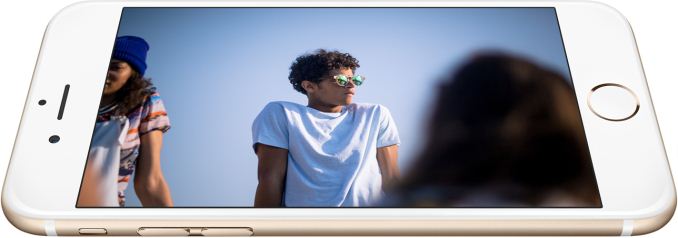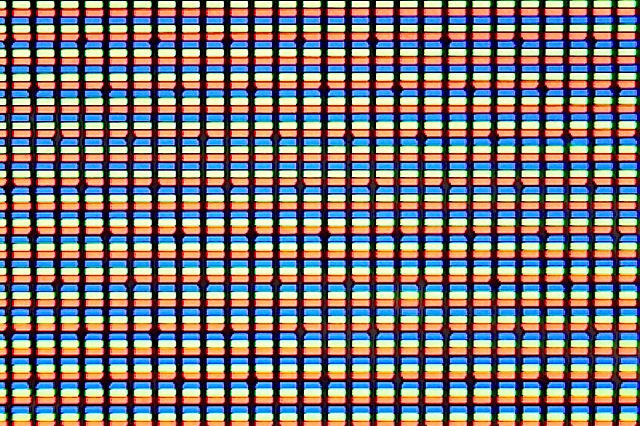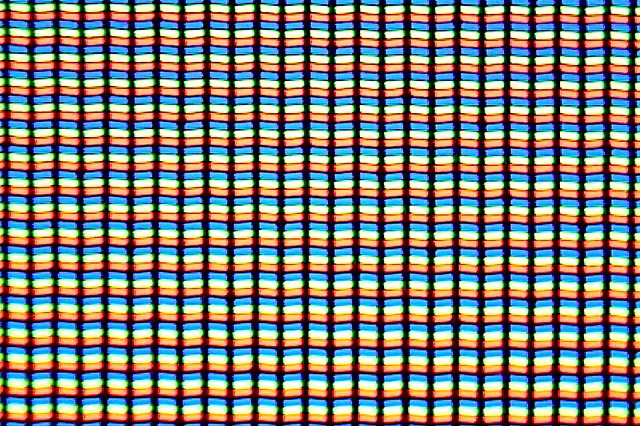Understanding Dual Domain Pixels in the iPhone 6 and iPhone 6 Plus
by Joshua Ho on September 9, 2014 7:20 PM EST- Posted in
- Smartphones
- Apple
- Mobile
- iOS
- iPhone 6
- iPhone 6 Plus

In the launch announcement, Apple announced that their new display had dual domain pixels, which improved viewing angles. Unfortunately they dropped the subject at this, which make for a lot of room for confusion. Anyone that does a cursory analysis through Google will only find references to this type of display in monitors for medical use or similarly technology used by IBM monitors.
However, dual domain pixels are actually not as complicated as they seem. In fact, this is a display technology I remember seeing with the announcement of LG’s AH-IPS technology back in 2011. For those interested in the technical definition, dual domain pixels refers to the fact that the electrodes in the pixels aren’t all aligned. Instead, they’re skewed when viewed from the perspective of the lines defined by the rectangular edges of the display. Because these subpixels are skewed, it’s possible to compensate for uneven lighting that occurs because each individual subpixel is viewed at a different angle, which causes a change in color and a faster fall-off of contrast.

At any rate, this is easiest to explain with a photos. Above, we see the pixel layout of the iPhone 5. This is the standard rows/columns of pixels, and not really news to anyone that knows how displays work. Let's look at a dual domain arrangement next.

Anyone that has tried the HTC One (M7) or One X will probably understand the effect of this change as these phones have had this type of skewed subpixel format to get better viewing angles and less color shifting with changes in viewing angles. This can carry some risk though as black backgrounds may have some color shifting towards purple instead of yellow/blue, which can look strange but is quite subtle in my experience. There's really not too much in the way of disadvantages, so I look forward to seeing how Apple's new displays do in our tests.










30 Comments
View All Comments
SilthDraeth - Tuesday, September 9, 2014 - link
Looking forward to Apple suing HTC for using dual domain pixels.euskalzabe - Tuesday, September 9, 2014 - link
HAHAHA so true!eanazag - Tuesday, September 9, 2014 - link
True, but no one has felt threatened by HTC in a few years.GC2:CS - Wednesday, September 10, 2014 - link
What ? They have an 10 year licensing agreement. They can license everything Apple uses and other way around.Impulses - Wednesday, September 10, 2014 - link
They'd sue the panel maker, if anything, not HTC... Except Apple doesn't make their own displays either, so yeah.abhaxus - Saturday, September 13, 2014 - link
Apple (and Microsoft, for that matter) have repeatedly shown that there is more value in suing the vendor that is USING the technology rather than the one that is providing it. Better to damage the reputation of the brand actually competing with you than one that may be supplying you as well.jameskatt - Monday, September 15, 2014 - link
That did not stop Apple from suing Samsung.iwod - Wednesday, September 10, 2014 - link
They have a patents agreement for a long time.tipoo - Tuesday, September 9, 2014 - link
Hm, we've seen quite a few phones with wavy pixels like that, just never named that.lukewayne - Wednesday, September 10, 2014 - link
apple loves to make up names for things that already exist in the wild and claim them as unique.